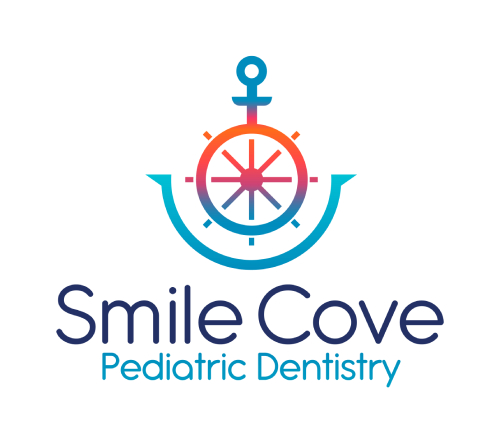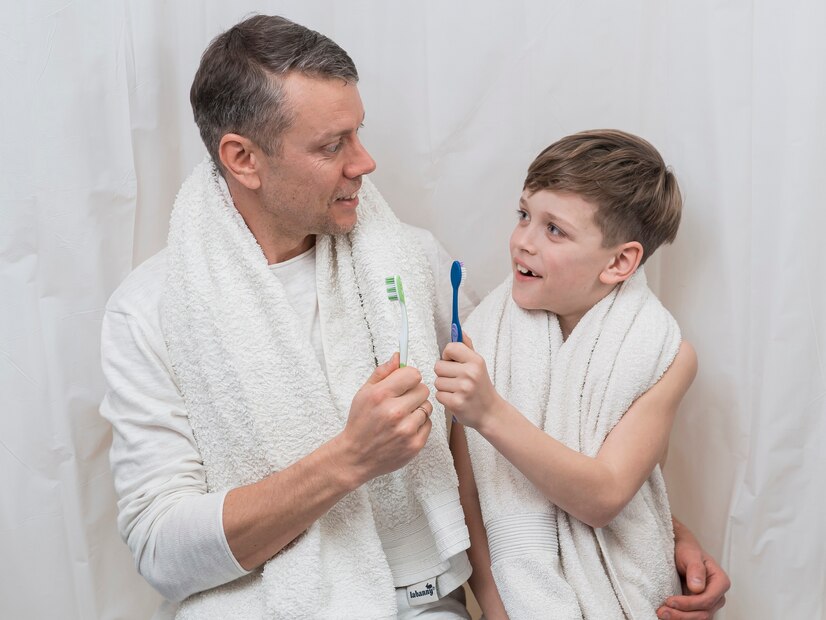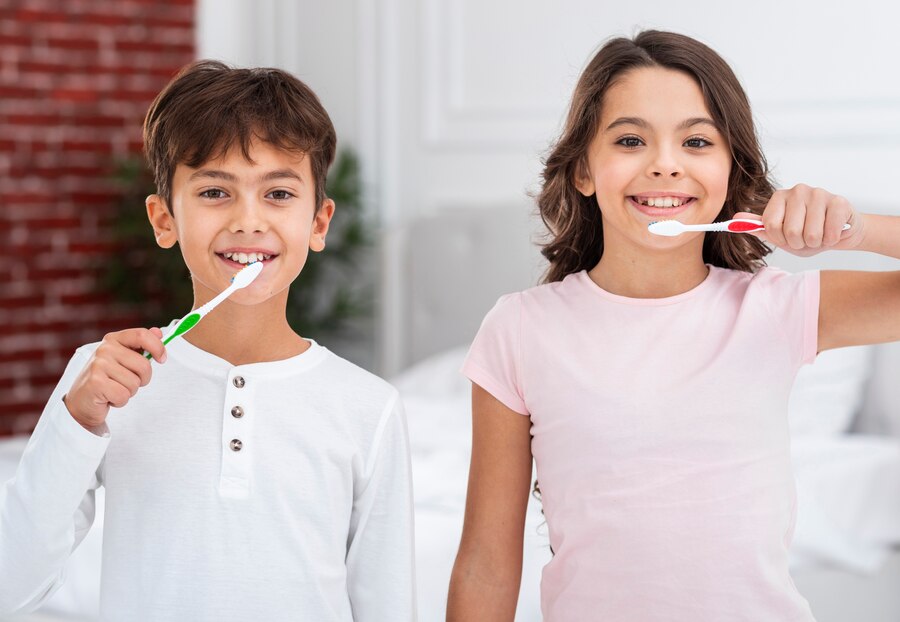As a parent, one of your top priorities is making sure your child’s smile is healthy and bright. Good oral hygiene habits start at a young age, and choosing the right toothbrush for your kid is a critical step. With so many options available, finding the right one can be a bit overwhelming. In this comprehensive guide, we’ll walk you through everything you need to know to pick the best toothbrush for your child, ensuring that their teeth stay clean and their smile stays beautiful.
1. Understanding the Importance of Oral Hygiene for Kids
Good oral hygiene in children goes beyond preventing cavities; it sets the foundation for a lifetime of healthy teeth and gums. Proper brushing techniques, along with the right toothbrush, can help your child keep their teeth clean, strong, and free from plaque and tartar. Encouraging your child to brush regularly is essential for preventing early tooth decay, which can affect both their baby teeth and the permanent teeth that come in later.
2. Different Types of Toothbrushes for Kids
Toothbrushes come in a variety of shapes, sizes, and designs to cater to different age groups and preferences. Choosing the right type depends on your child’s age, oral health needs, and their comfort level. Here are some common types of toothbrushes for kids:
2.1 Manual Toothbrushes
Manual toothbrushes are the traditional option and are widely available. They come in different sizes, with soft bristles being the best choice for kids. A manual toothbrush allows your child to have complete control over their brushing technique, helping them develop good brushing habits early on.
2.2 Electric Toothbrushes
Electric toothbrushes can be an excellent choice for kids, especially if they struggle to brush thoroughly with a manual brush. These brushes often come with fun designs, characters, and even music, making the brushing process more enjoyable. The vibrating or rotating heads help remove plaque effectively, even in hard-to-reach areas.
2.3 Silicone Toothbrushes
Silicone toothbrushes are soft and gentle on young gums, making them ideal for toddlers and babies. These brushes are perfect for introducing oral care to very young children, as they are easy to grip and won’t cause discomfort during brushing.
3. Choosing the Right Size and Design
The size and design of the toothbrush play a significant role in how effective it is for kids teeth cleaning. The right size ensures that the brush fits comfortably in your child’s mouth and allows them to reach all areas effectively.
3.1 Age-Specific Sizes
- 0-2 Years: For infants, use a toothbrush with a small head and very soft bristles. The handle should be long enough for you to guide it easily.
- 3-5 Years: At this age, children can start to brush with a slightly larger brush head, but it should still have soft bristles and a comfortable grip.
- 6+ Years: Older kids can use toothbrushes with a slightly bigger head and a handle designed for better grip, suited to their growing hands.
3.2 Fun Designs and Colors
Children are more likely to be enthusiastic about brushing if their toothbrush features fun designs or their favorite cartoon characters. Opt for toothbrushes that come in bright colors or have themes that your child loves. This helps make brushing a fun activity rather than a chore.
4. Bristle Type Matters
When it comes to choosing a toothbrush for kids, the bristle type is crucial. Here’s why soft bristles are the most recommended for young children:
- Soft Bristles: Soft bristles are gentle on the gums and prevent damage to the enamel. For kids, always choose toothbrushes with soft bristles to ensure a safe cleaning experience.
- Medium and Hard Bristles: These are generally too harsh for children’s teeth and can cause gum irritation or enamel wear.
Soft bristles are effective for removing plaque without hurting your child’s gums, making them the ideal choice for kids teeth cleaning.
5. Considering Special Features
Some toothbrushes come with added features that can enhance the brushing experience for your child:
5.1 Built-In Timers
To encourage proper brushing habits, some toothbrushes have built-in timers that play music or vibrate for two minutes. This helps ensure that your child brushes for the recommended amount of time without rushing.
5.2 Interactive Apps
Many electric toothbrushes now come with interactive apps that engage kids in games while they brush. These apps are designed to guide your child through the brushing process, teaching them the correct techniques in a fun and educational way.
6. Teaching Your Child the Proper Brushing Technique
No matter how good the toothbrush is, the technique is just as important. Here are some tips for teaching your child the right way to brush their teeth:
- Use a Pea-Sized Amount of Toothpaste: For children over the age of two, use a pea-sized amount of fluoride toothpaste. For younger children, a smear the size of a grain of rice is sufficient.
- Angle the Brush: Teach your child to hold the toothbrush at a 45-degree angle to the gums.
- Circular Motions: Encourage small, gentle circular motions rather than aggressive back-and-forth brushing.
- Brush All Surfaces: Remind your child to brush all surfaces of their teeth, including the fronts, backs, and chewing surfaces.
7. When to Replace Your Child’s Toothbrush
It’s important to replace your child’s toothbrush regularly to ensure effective cleaning. Here are some signs that it’s time for a new brush:
- Frayed Bristles: If the bristles are starting to fray or lose their shape, it’s time to replace the toothbrush.
- Every 3-4 Months: Even if the brush looks fine, it’s best to replace it every three to four months.
- After Illness: Replace the toothbrush if your child has been sick to avoid reinfection.
8. Making Brushing Fun and Motivating for Kids
Getting kids excited about brushing can be a challenge, but with a few creative strategies, it’s possible to turn it into a fun routine:
- Create a Reward System: Set up a reward chart where your child earns a sticker each time they brush properly.
- Use a Brushing Song: Play a two-minute song that your child loves to keep them brushing for the right amount of time.
- Lead by Example: Brush your teeth alongside your child to show them how it’s done.
9. Consulting Your Dentist for Recommendations
Every child’s mouth is different, and what works for one child may not work for another. It’s a good idea to consult your pediatric dentist to get personalized recommendations for your child’s toothbrush. They can guide you on the best types and brands suited to your child’s specific needs and age.
10. Choosing Environmentally Friendly Options
For families concerned about sustainability, there are many eco-friendly toothbrush options available, such as bamboo toothbrushes. These toothbrushes are biodegradable and reduce plastic waste, making them a great choice for environmentally conscious parents.
11. The Role of Toothbrushes in Preventive Oral Health for Kids
Toothbrushes are a vital tool in the prevention of dental problems, particularly for young children who are still developing their oral hygiene habits. Proper toothbrushing can help prevent the most common dental issues, such as cavities and gum disease, ensuring that your child maintains a healthy smile as they grow.
11.1 Cavity Prevention
Cavities are one of the most prevalent dental problems in children. When your child eats sugary foods, the bacteria in their mouth produce acid that can erode tooth enamel, leading to cavities. The right toothbrush can effectively remove food particles and plaque from the teeth, reducing the risk of cavities. Soft-bristled brushes are particularly effective in cleaning kids’ teeth without causing damage to the delicate enamel.
11.2 Plaque Control
Plaque is a sticky film of bacteria that constantly forms on teeth. If not removed properly, it can lead to tartar buildup and eventually cause gum disease. Teaching your child to brush their teeth at least twice a day with the right toothbrush helps control plaque formation and keeps their gums healthy.
11.3 Building Good Oral Hygiene Habits
Using a suitable toothbrush from a young age helps instill good oral hygiene habits that last a lifetime. Kids are more likely to continue brushing regularly if they find the experience comfortable and even enjoyable. Choosing a toothbrush that fits well in their hands and is gentle on their gums encourages consistency in their dental care routine.
12. Common Mistakes Parents Make When Choosing a Toothbrush
Even with the best intentions, parents can sometimes make mistakes when selecting a toothbrush for their child. Here are some common errors and how to avoid them:
12.1 Choosing the Wrong Bristle Type
One of the most common mistakes is choosing a toothbrush with bristles that are too hard. While it may seem like firmer bristles would clean more effectively, they can actually harm a child’s teeth and gums. Always opt for a toothbrush with soft bristles to ensure gentle yet effective cleaning.
12.2 Ignoring the Size of the Brush Head
Using a toothbrush that’s too big for your child’s mouth can make it difficult to reach all areas, particularly the back teeth. This can lead to improper cleaning and missed spots where plaque can build up. Make sure to select a brush with a head size that fits comfortably in your child’s mouth, based on their age group.
12.3 Not Replacing the Toothbrush Regularly
Toothbrushes lose their effectiveness as the bristles become worn or frayed. Many parents forget to replace their child’s toothbrush on time, which can lead to inadequate cleaning. A good rule of thumb is to replace the toothbrush every three to four months or sooner if the bristles are visibly worn.
12.4 Neglecting the Fun Factor
Young children are more inclined to brush regularly when they enjoy the experience. Choosing a toothbrush with bright colors, fun designs, or one that features their favorite character can transform toothbrushing from a task into an activity they look forward to.
13. How Often Should Kids Brush Their Teeth?
Brushing frequency is just as important as technique and toothbrush selection. Here’s how often kids should be brushing for optimal oral health:
- Twice a Day: It is recommended that children brush their teeth at least twice a day—once in the morning and once before bed. This helps to remove plaque buildup and prevent cavities.
- After Meals: If possible, encourage your child to brush after meals, especially if they consume sugary or starchy foods that are known to cause tooth decay.
- Regular Flossing: Once your child has two teeth that touch, it’s time to introduce flossing into their routine to clean areas that a toothbrush can’t reach.
By establishing these habits early, you are setting the stage for your child to take charge of their oral hygiene as they grow older.
14. How to Teach Your Child to Brush Independently
As your child grows, they’ll need to learn how to brush their teeth on their own. It’s important to guide them through the process to ensure they develop good technique. Here are some tips to help your child become an independent brusher:
14.1 Start with Supervision
When your child is just starting, supervise their brushing to make sure they are covering all parts of their mouth and using the correct technique. Gradually reduce your level of assistance as they become more comfortable with the process.
14.2 Make Brushing a Fun Activity
Turn brushing into a fun activity by creating a routine with songs, games, or storytelling. Use a two-minute timer or play their favorite song while they brush to encourage them to brush for the recommended time.
14.3 Use Positive Reinforcement
Praise your child when they brush properly and consistently. Positive reinforcement can motivate them to keep up the good work and develop a positive attitude toward oral hygiene.
14.4 Lead by Example
Children often imitate their parents’ behavior, so make sure they see you brushing and flossing regularly. Brush your teeth alongside your child to make it a family activity, showing them that good dental care is a priority for everyone.
15. Debunking Common Myths About Kids’ Toothbrushes
There are many myths surrounding the use of toothbrushes for kids, and it’s important to separate fact from fiction to make informed decisions about your child’s oral health.
15.1 Myth: Hard Bristles Clean Better
Many people believe that harder bristles clean teeth more effectively. In reality, soft bristles are recommended for both kids and adults as they are gentle on the gums and enamel while still providing a thorough clean.
15.2 Myth: Electric Toothbrushes Are Only for Adults
Electric toothbrushes are not just for adults; they can be highly beneficial for kids too. The oscillating or vibrating heads help to clean teeth more effectively with less effort, making them a great option for children who struggle with manual brushing.
15.3 Myth: Kids Don’t Need to Brush Baby Teeth
Some parents think that because baby teeth are temporary, they don’t require as much care. This is not true. Healthy baby teeth are crucial for proper chewing, speech development, and acting as placeholders for permanent teeth. Maintaining good oral hygiene from a young age is essential to avoid complications later.
16. The Impact of a Good Toothbrush on Kids’ Dental Visits
Using the right toothbrush can significantly affect your child’s dental health and their experience during dental visits. Regular brushing with a proper toothbrush can prevent the most common dental issues, reducing the need for fillings, extractions, or other dental treatments.
16.1 Reducing Dental Anxiety
When children practice good oral hygiene at home, they tend to have fewer dental problems, leading to more positive experiences at the dentist. This can reduce dental anxiety and help them maintain a proactive approach toward their dental health as they grow.
16.2 Improving Oral Health Outcomes
Effective brushing habits established with the right toothbrush can lead to better oral health outcomes, including reduced plaque, fewer cavities, and healthier gums. This not only boosts your child’s self-esteem but also helps them develop a lifelong habit of caring for their teeth.
17. Additional Tips for Maintaining Kids’ Dental Hygiene
To maximize the benefits of choosing the right toothbrush, here are some additional tips to keep your child’s oral hygiene on track:
- Use Fluoride Toothpaste: Fluoride strengthens teeth and helps prevent cavities. Ensure your child uses a toothpaste that contains fluoride.
- Limit Sugary Snacks: Reduce the consumption of sugary snacks and drinks, which are major contributors to tooth decay in children.
- Regular Dental Checkups: Schedule regular visits to the dentist for check-ups and professional cleanings. Early detection of dental issues can prevent more serious problems.
Conclusion
Choosing the right toothbrush for your child is one of the first steps to establishing good oral hygiene habits. Remember to select a brush that’s appropriate for your child’s age, with soft bristles and a fun design to make brushing an enjoyable experience. Regular brushing and proper technique play a significant role in keeping your child’s teeth healthy and clean.
For the best care and guidance in maintaining your child’s oral health, trust Smile Cove Pediatric Dental. We are here to support you in ensuring your child’s smile stays bright and healthy for years to come.


